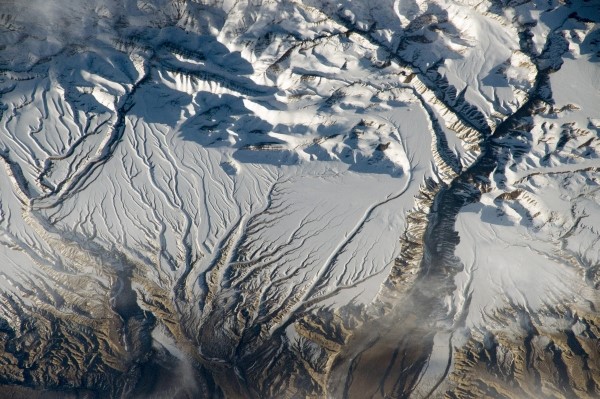
Over the course of a decade, half the spring water in the Indian state of Sikkim disappeared. Nestled in the eastern Himalayas, the villages of Sikkim saw their wells run dry, pastures parched, and families travel farther and farther from home to draw fresh water. Sikkim is just one of many Himalayan regions, affected by the increasingly common phenomenon of disappearing spring water. No-one is sure why this is happening. Climate change may be having an influence, along with other factors. What is clear, however is that, over recent years, less and less spring water makes it down the Himalayan ridges and valleys to the remote villages that depend on it the most.
While Himalayan glaciers and rivers are comparatively well-researched, our knowledge of the Himalayan springs is surprisingly lacking. In a new working paper, Methods to Investigate the Hydrology of the Himalayan Springs researchers at the International Water Management (IWMI) are urging scientists to take up the challenge. Despite their role as a major—and sometimes the only—source of freshwater for the many mountain villages that dot the 2,400 km, five-country expanse of the Himalayas, our knowledge of spring hydrology seems as elusive as the vanishing waters themselves.
“We know some of the factors that impact flows,” says IWMI’s Pennan Chinnasamy, one of the paper’s co-authors. “These include population growth, increased groundwater pumping, soil erosion, changing rainfall patters, climate change, deforestation, and infrastructure development. However, still too little is understood about Himalayan springs and more and better site-specific research is needed. Better understanding will help policy-makers improve spring water access in regions vulnerable to climate change induced water scarcity. Particularly important is quality baseline data to compare and evaluate the success of development projects.”
Specifically, looking into the chemistry of spring water may be key to understanding the Himalayan hydrology. One method proposed in the paper is isotope analysis. As shown in research from China, Spain, and India, isotopic methods are powerful tools in hydrological research. The hydrogen and oxygen isotopes in a water molecule are unique markers that make them ideal for identifying water sources and pathways. Isotope analysis has the potential to help researchers locate spring water recharge areas and identify human impacts on springs.
Read more at:
http://www.iwmi.cgiar.org/2016/07/silent-springs/
This news item is part of a Partner Spotlight! Each week, the GFAR Secretariat is turning the spotlight on the work and collective actions ofPartners in GFAR who share in our mission to strengthen and transform agri-food research and innovation systems globally. For the week of 29 August - 2 September, we are celebrating our partner: International Water Management Institute (IWMI).
For more information on the Partners in GFAR, and to become a Partner, click here!
